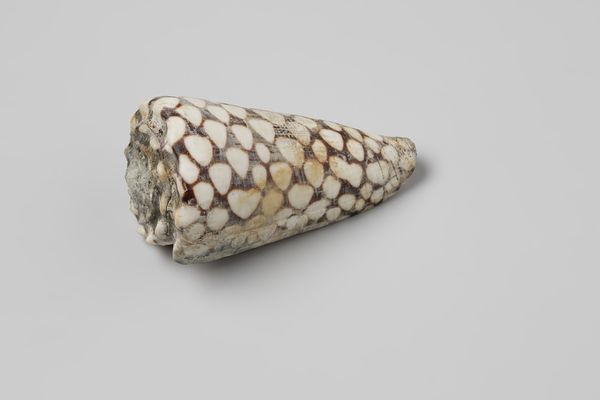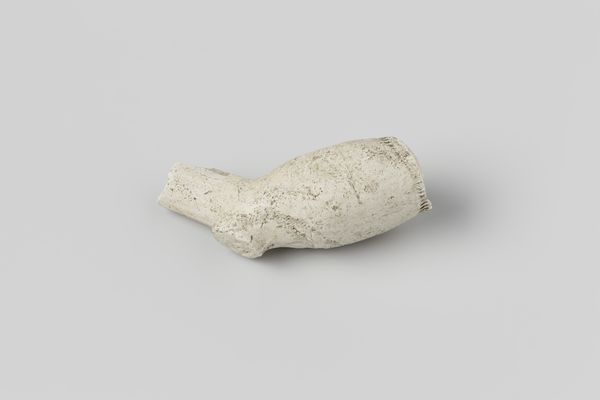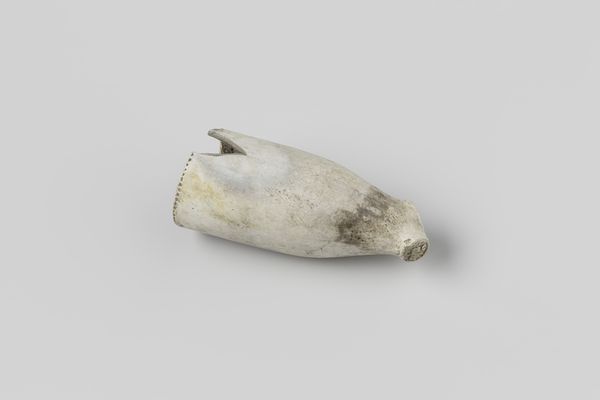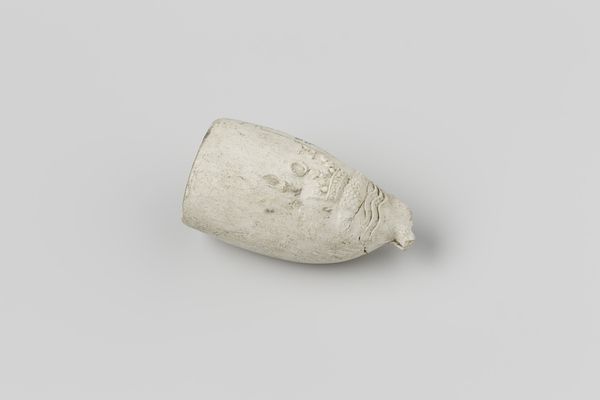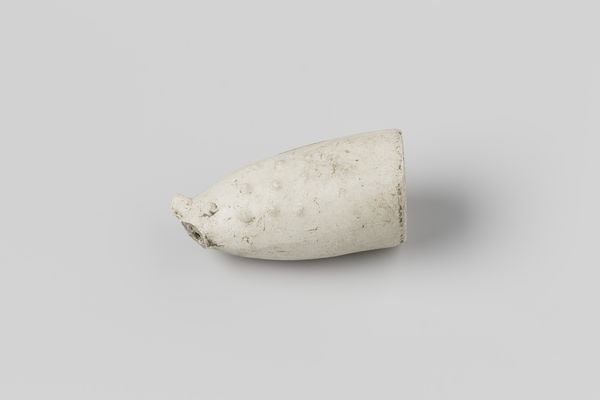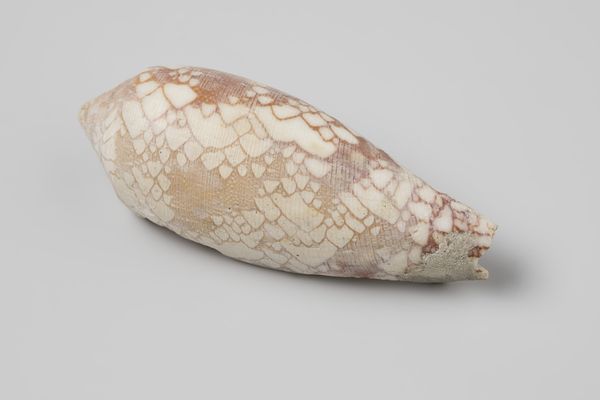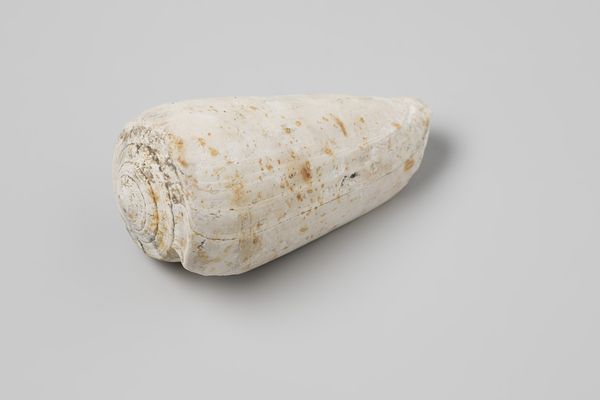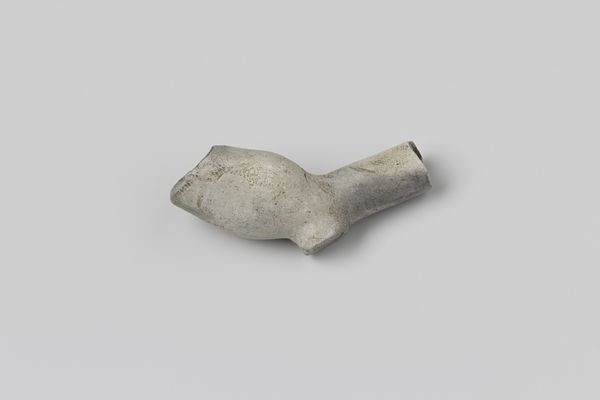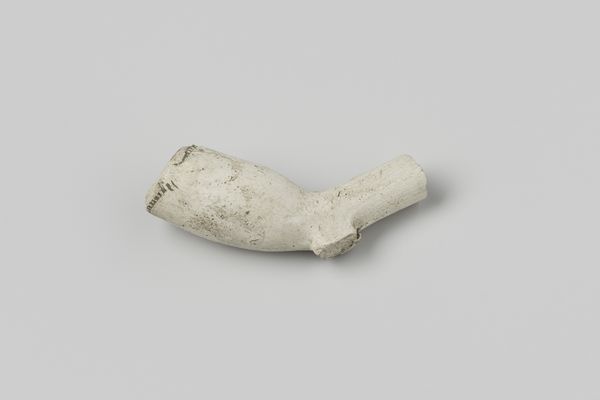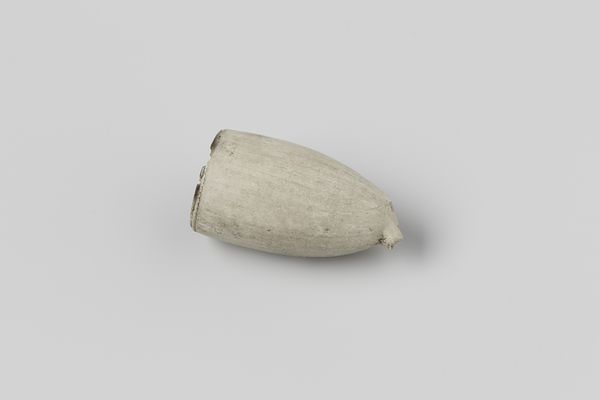
Terebra maculata shell from the wreck of the Dutch East India ship Witte Leeuw before 1613
0:00
0:00
photography
#
still-life-photography
#
photography
#
realism
Dimensions: length 16.0 cm, width 4.1 cm, height 5 cm
Copyright: Rijks Museum: Open Domain
This Terebra maculata shell was naturally formed by a marine gastropod, before becoming a historical artifact on the wreck of the Dutch East India ship Witte Leeuw. Its tapered, spiral form speaks to the creature's incremental growth, a slow process of accretion. But it's the shell's surface that tells a more complex story. The pitting and discoloration are the result of centuries spent submerged, a testament to the relentless action of the sea. In this way, it's a potent symbol of the passage of time, and also a direct link to the human drama of the Witte Leeuw's sinking in 1613, laden with trade goods. Consider the shell as a raw material, reworked by the ocean into something new. It's no longer just a specimen of natural history, but a poignant relic of maritime trade and colonial ambition.
Comments
No comments
Be the first to comment and join the conversation on the ultimate creative platform.
